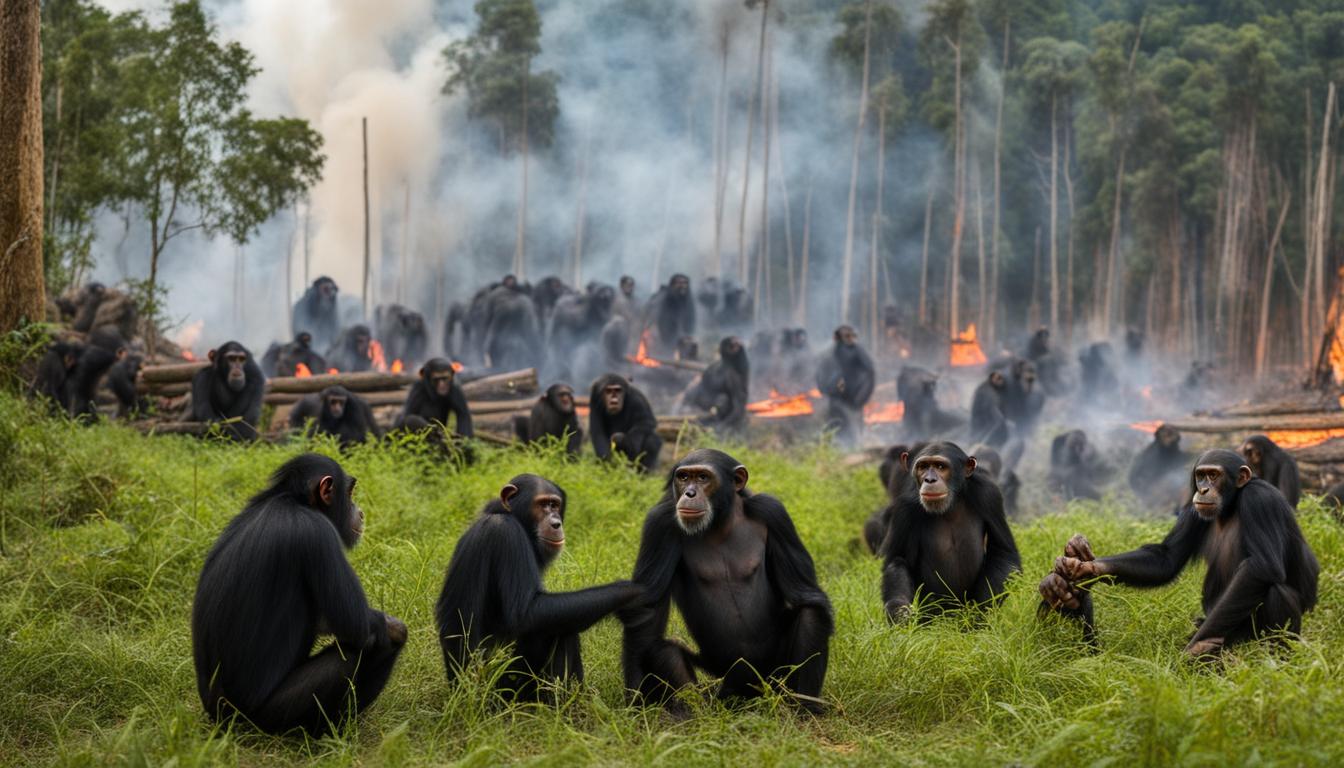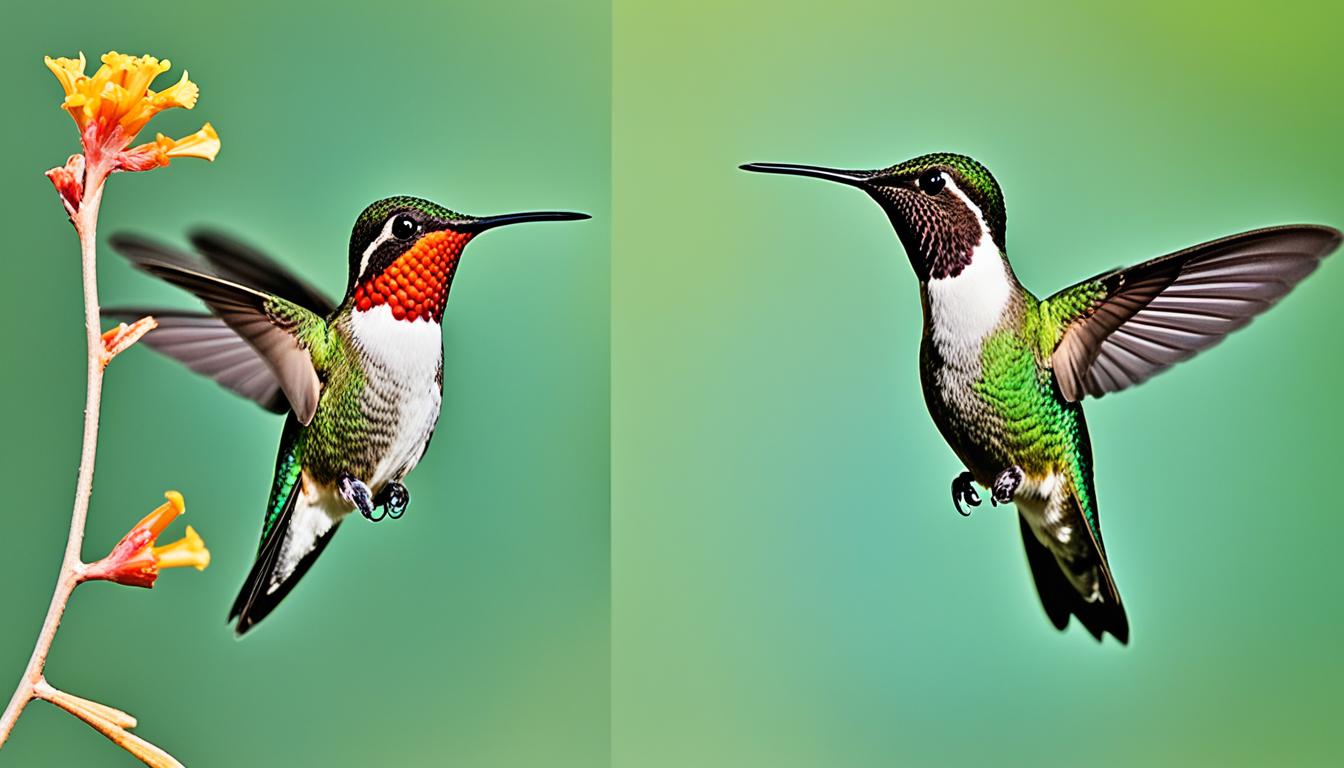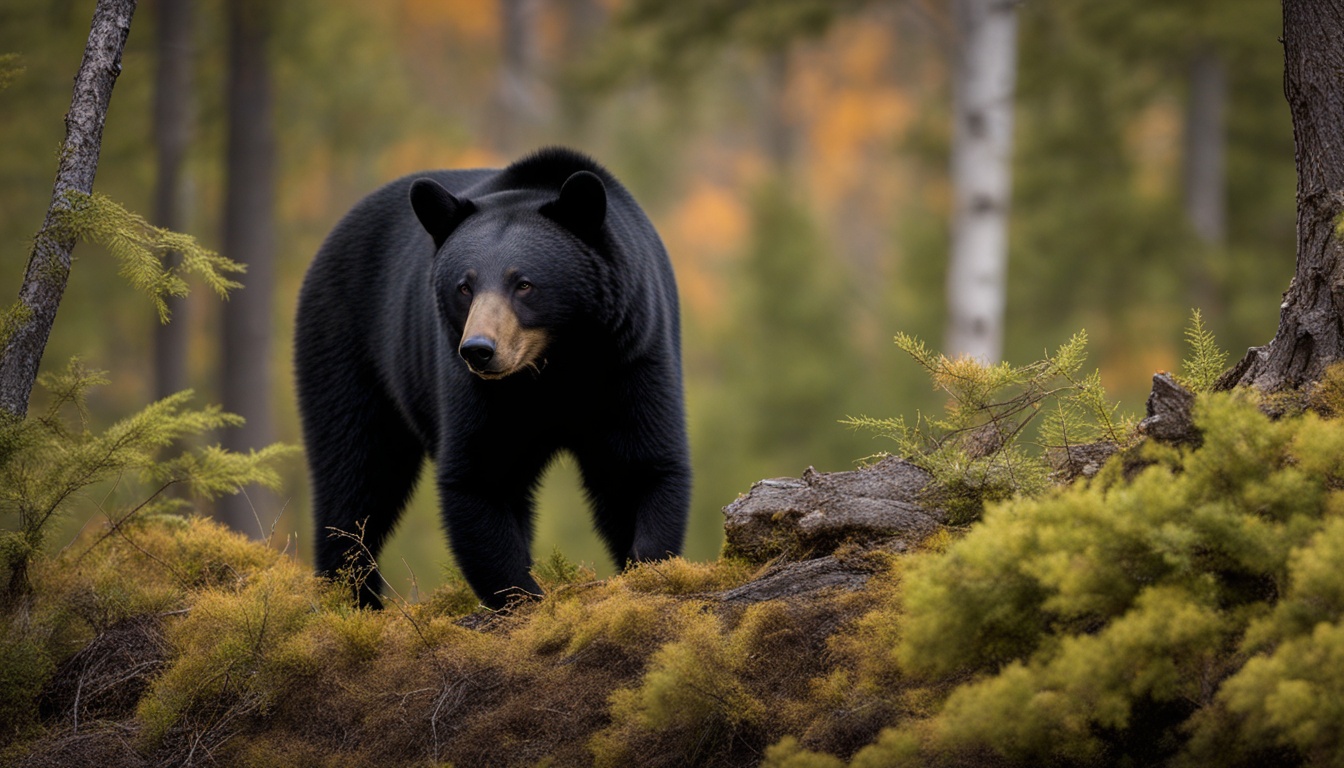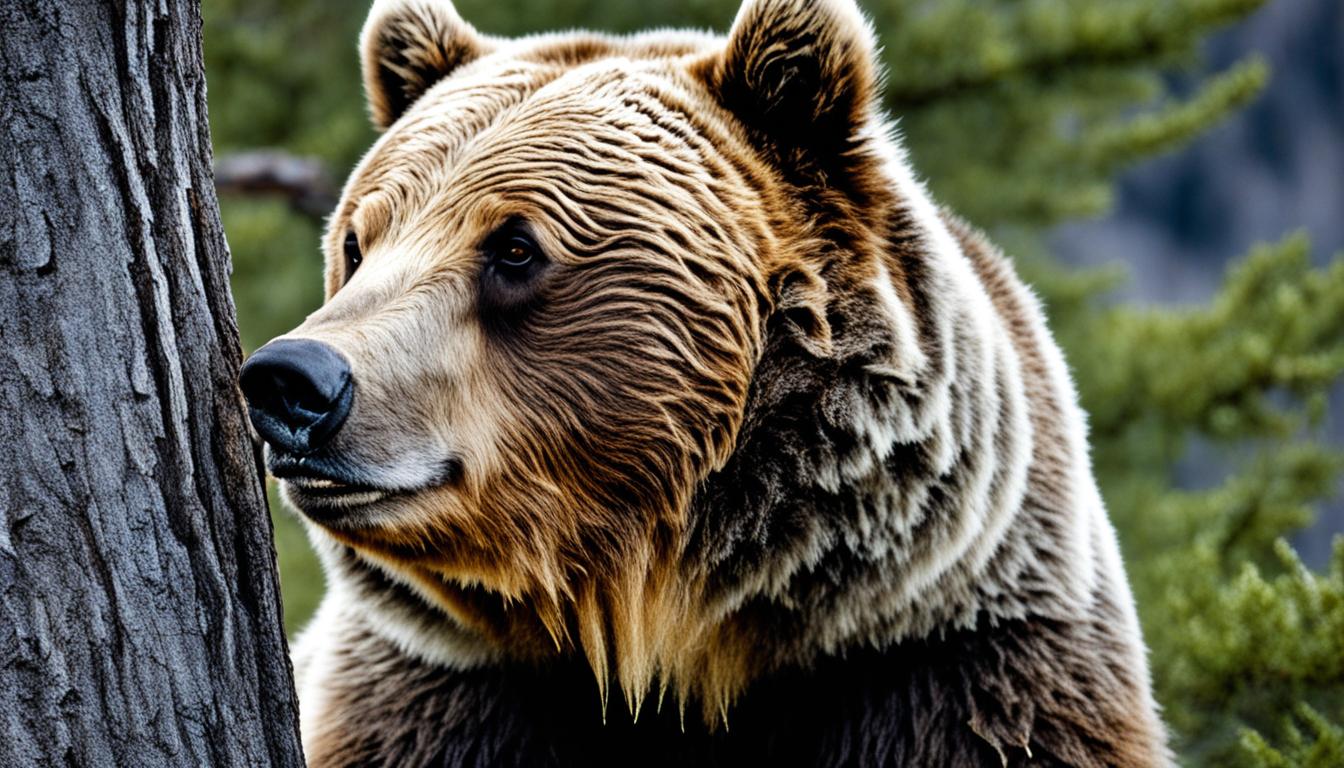In the face of growing human-chimpanzee conflicts, it is crucial to examine the impact these conflicts have on chimpanzee populations and prioritize their conservation. Understanding the consequences of such conflicts is the first step towards finding effective solutions to protect these magnificent creatures.
Chimpanzee populations, particularly those in Gombe National Park, have been significantly affected by the loss of suitable habitats caused by human activities like charcoal production and smallholder agriculture. These activities have not only resulted in the decline of chimpanzees in Gombe but also pose a threat to the overall chimpanzee population in Tanzania.
The decline in suitable habitats leads to a reduction in resources and increases interactions between humans and chimpanzees, escalating conflicts. These conflicts impact the behavior, movements, and foraging patterns of chimpanzees, disrupting their social dynamics and cultural practices.
To address this alarming situation, the Jane Goodall Institute is actively working with local communities to mitigate human-chimpanzee conflicts and promote coexistence. By creating land use plans that incorporate conservation areas, raising awareness, and facilitating educational initiatives, we can strive towards a harmonious relationship between humans and chimpanzees.
It is essential to recognize the importance of chimpanzee conservation and take collective action to protect their habitats and ensure the survival of these remarkable creatures for generations to come.
Factors contributing to chimpanzee population decline
The decline in the chimpanzee population can be attributed to several factors, with the loss of suitable habitats being a primary cause. This is mainly driven by charcoal production and smallholder agriculture, which have resulted in deforestation and the destruction of forest corridors that link essential chimpanzee habitats.
Charcoal production involves cutting down trees and burning them to create charcoal for fuel. This process has led to the loss of large areas of forest, depriving chimpanzees of their natural habitats and disrupting their ecosystems. Additionally, smallholder agriculture, including the cultivation of crops by local farmers, has contributed to habitat destruction through the clearing of land for farming purposes.
The combined effects of charcoal production and smallholder agriculture have not only reduced the size of chimpanzee habitats but also increased human-chimpanzee conflicts. As chimpanzees’ natural habitats shrink, they are forced into closer proximity with human settlements and agricultural areas, resulting in more frequent and intense interactions between the two species.
Human-chimpanzee conflicts often arise when chimpanzees raid crops or enter villages in search of food. In response, humans may resort to aggressive measures to protect their livelihoods and mitigate potential damage caused by chimpanzees. These conflicts can lead to injury or death for both humans and chimpanzees, further exacerbating the decline in chimpanzee populations.
To illustrate the impact of loss of suitable habitats, the table below presents the comparison of chimpanzee population changes in Gombe National Park before and after the increase in charcoal production and smallholder agriculture:
| Year | Chimpanzee Population |
|---|---|
| 2000 | 500 |
| 2010 | 350 |
| 2020 | 200 |
As depicted in the table, the chimpanzee population in Gombe National Park has experienced a steady decline over the past two decades, closely corresponding to the increase in charcoal production and smallholder agriculture. This alarming trend highlights the urgent need for conservation efforts to address the loss of suitable habitats and mitigate the human-chimpanzee conflicts endangering the population.
In the next section, we will explore the impact of human-wildlife conflicts on chimpanzee behavior and the efforts being made to mitigate these conflicts.
Impact of human-wildlife conflicts on chimpanzee behavior
Human-wildlife conflicts, particularly between humans and chimpanzees, have a significant impact on chimpanzee behavior. When chimpanzees venture into human settlements or agricultural areas, they often face aggressive responses from humans, which can result in injury or even death. This fear of conflicts with humans forces chimpanzees to alter their natural behaviors. They change their movements, foraging patterns, and resource utilization to minimize the risk of encountering humans. The presence of humans and the ongoing conflicts disrupts important social and cultural behaviors within chimpanzee communities, leading to potential long-term consequences for their survival and well-being.
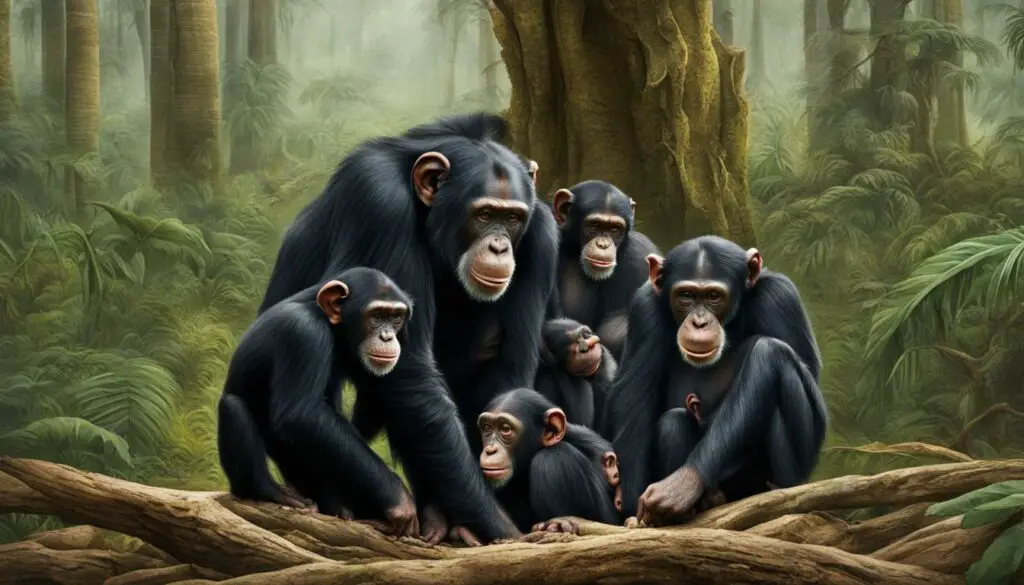
Human-wildlife conflicts have a profound impact on chimpanzee behavior.
Efforts to Mitigate Human-Chimpanzee Conflicts
The Jane Goodall Institute recognizes the urgent need to mitigate human-chimpanzee conflicts and protect chimpanzee populations in Gombe National Park. Through collaborative efforts with local communities, the institute is implementing various strategies to foster a harmonious relationship between humans and chimpanzees.
Creating Land Use Plans:
One key initiative is the creation of land use plans for villages in the vicinity of Gombe National Park. These plans ensure that designated areas are set aside for conservation purposes, safeguarding vital chimpanzee habitats from encroachment and further degradation. By establishing clear boundaries and zoning regulations, communities can coexist with chimpanzees while preserving their natural ecosystems.
Awareness and Education:
“Conservation is a shared responsibility. By raising awareness and promoting education, we empower individuals to become stewards of their environment.”
– Jane Goodall
To promote coexistence and mitigate conflicts, the Jane Goodall Institute conducts extensive awareness programs and educational initiatives. These efforts aim to enlighten community members about the importance of protecting the environment and chimpanzee habitats. By fostering a deeper understanding of the interdependency between humans and chimpanzees, these programs encourage sustainable practices and discourage behaviors that may endanger chimpanzees.
The role of agriculture and palm oil production in chimpanzee population decline
Smallholder agriculture, including the cultivation of oil palm trees, plays a significant role in the decline of chimpanzee populations. The increasing demand for palm oil has led to the expansion of oil palm plantations, particularly in Tanzania’s Kigoma region. As a result of this encroachment into chimpanzee habitats, their suitable foraging areas are reduced, leading to habitat degradation and a higher risk of conflict with humans.
This conversion of forested areas into agricultural land further exacerbates the decline of chimpanzee populations. The loss of natural habitats greatly impacts their ability to find food and traverse their traditional territories. In turn, this disturbance disrupts their social dynamics and puts them at a higher risk of extinction.
The cultivation of oil palm trees, specifically, has been a major driver of habitat degradation. The process involves clearing large areas of land, which disrupts the natural ecosystem and destroys vital habitats for chimpanzees and other wildlife species. The intensive use of pesticides and herbicides in oil palm cultivation also poses significant risks to the health and survival of chimpanzees.
To address this issue, it is crucial to promote sustainable agricultural practices that minimize the negative impacts on chimpanzees and their habitats. This includes implementing responsible land management strategies, such as agroforestry, which combines tree planting with agricultural crops, allowing for the conservation of chimpanzee habitats while meeting the needs of local communities.
By adopting sustainable agricultural practices and raising awareness about the negative consequences of habitat degradation caused by smallholder agriculture and palm oil production, we can work towards protecting chimpanzee populations and their delicate ecosystems.
Strategies for Coexistence and Conservation
To foster coexistence between humans and chimpanzees, it is crucial to implement a multi-faceted approach that encompasses sustainable land use practices and community engagement. One important strategy is the adoption of agroforestry, a practice that combines agriculture and forestry to create a balance between human needs and the conservation of chimpanzee habitats. By integrating trees into agricultural landscapes, agroforestry provides shade, improves soil fertility, and creates natural corridors for chimpanzees to move between fragmented habitats.
In addition to sustainable land use practices, educational programs and awareness campaigns play a vital role in promoting coexistence and raising public understanding about the significance of chimpanzee conservation. By increasing awareness about the coexistence between humans and chimpanzees and the importance of protecting their habitats, these initiatives help foster empathy and a sense of responsibility towards the survival of chimpanzee populations.
Through collaborative efforts between conservation organizations, local communities, and government entities, we can ensure the long-term survival of chimpanzees and promote the delicate balance between humans and wildlife. By prioritizing conservation efforts and implementing sustainable practices, we can create a future where humans and chimpanzees can thrive together, preserving the richness and biodiversity of our natural world.
What are the Current Impacts of Human-Chimpanzee Conflicts on Chimpanzee Populations?
Human-Chimpanzee conflicts have a significant impact on chimpanzee populations. Increased habitat destruction, poaching, and disease transmission are major threats. The resulting loss of resources and increased stress can reduce chimpanzee numbers, making conservation efforts essential to mitigate the impact on chimpanzee populations.
Do Human-Gorilla Conflicts Affect Chimpanzee Populations as Well?
Human-gorilla conflicts can indirectly impact chimpanzee populations. As humans encroach on gorilla habitats, it leads to competition for resources. This can force chimps to migrate, disrupting their social structures and food sources. Understanding the strength comparison: gorillas vs humans is crucial for conservation efforts to minimize such conflicts.

